More on The Apocalypse ... and Yet More on Angers too ...
A Visit to Angers was clearly needed ...
The news that the Tapestry of the Apocalypse [La Tenture de l'Apocalypse] in Angers, Anjou, had once been 140 metres long but with several panels now lost our new artwork would be longer by one metre from July, meant a visit to Angers was unavoidable. And as chance would have it the route from the Channel Tunnel to Feuillade for the French tapestry group progress visit passed close to Angers. So there we were. No idea where the Apocalypse was but we found the cathedral. Surely they'd know?
Its west face was undergoing extensive repairs but making our way around the hoarding and scaffolding we entered a truly magnificent church. A team of three were setting up some recording equipment so we approached to ask 'the question'. And just as the word 'apocalypse' escaped our lips the cathedral organ thundered to life with a resounding chord. All very apocalyptical.
"Mais oui", they did know where to go. It was to be seen at the Castle just 100 metres away, "mais ...." it wasn't as impressive as Le Chant du Monde at L'Hopital Saint-Jean!
Obviously we needed to visit both of them! But first it was the Castle with the most magnificent gardens in its moat that caught our attention.
click to enlarge all images below
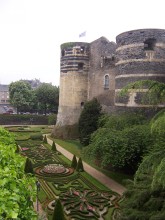 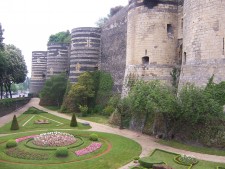 
The GuideBook contained a great surprise
Inside the beautiful Apocalypse was seen in half light. But a surprise was in store. When cleaning the Apocalypse Tapestry in the 1980s the backing had been removed to reveal that the whole tapestry was what is described as without a wrong side. The reverse side is an exact mirror image of the front. And most significantly of all the reverse had scarcely been exposed to direct light since the 14th century. All its colours were still to be seen as when it was originally created. The contrasts below show just how magic that moment must have been when the secret of the original colours was revealed. No longer were the trees blue but green with the explanation that on the face of the tapestry the yellow mixed with blue to achieve green had been lost over time to the sunlight. And as for the reds ....
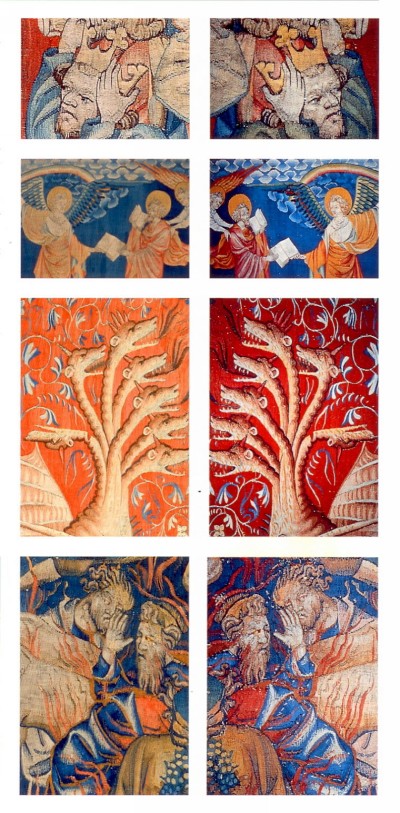
Le Chant du Monde Masterpiece from Jean Lurçat
Inspired by the Apocalypse d'Angers, which he saw for the first time in 1937, surrealist painter Jean Lurçat turned to tapestry to create his modern response. The Apocalypse d'Angers completed in 1380 measures 700 square metres and portrays the end of the world according to 'St John's Revelation' in the Bible. In Le Chant du Monde, Lurçat shows his contemporary version of apocalypse: 20th Century Nuclear War.
The first four panels illustrate the atom bomb and its destruction. In the fifth, he depicts man in harmony with nature, L'Homme en Gloire dans la Paix, his hoped-for alternative.
Five more panels, including La Poésie which is dominated by Sagittarius, Lurçat's symbol for the poet, "the one who hits right on," present man's creative capacity, as well as Lurçat's counterpoint to the science that created the atom bomb — the science that permitted space exploration.
Sadly the Gallery was closed during our lunchtime visit [winter schedules] so we were not to see Le Chant du Monde, and images do not seem to be available on the internet save one taken by a resourceful visitor reproduced here below:
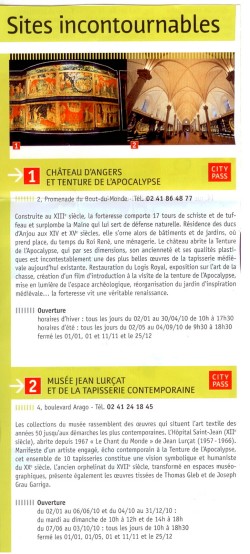 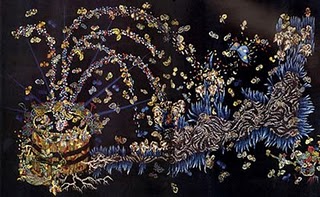
Published Date: May 19th 2010
|





